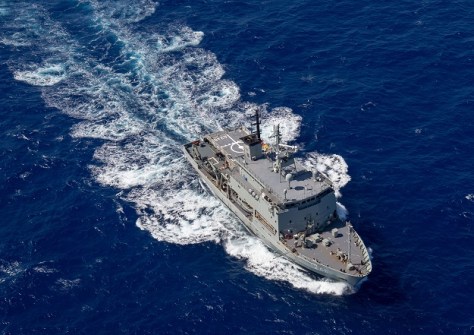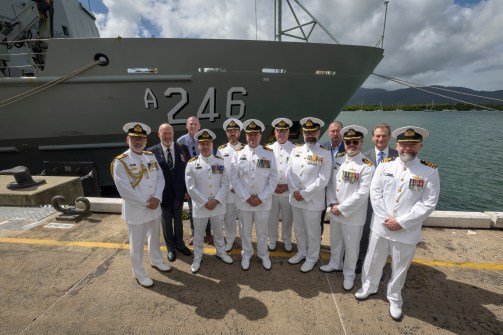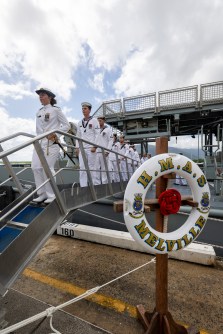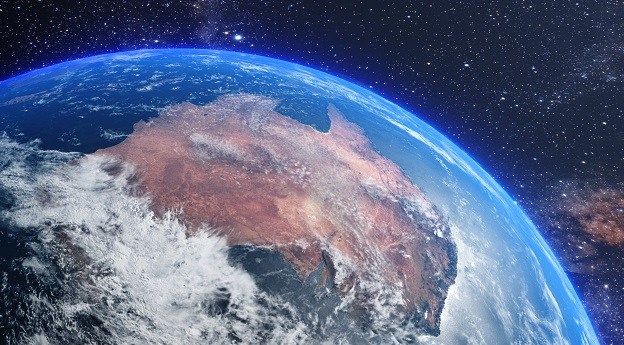
The Royal Australian Navy’s penultimate hydrographic survey ship, HMAS Melville, was decommissioned at its homeport in Cairns on Thursday, 8 August 2024.
This leaves the RAN with just one remaining hydrographic survey ship, HMAS Leeuwin, which itself is expected to be decommissioned in the not-too-distant future after a quarter of a century of service.
Previously, the RAN’s four Paluma-class hydrographic survey catamaran motor launches were decommissioned in pairs in September 2021 and June 2023.
The federal government is responsible for providing hydrographic services covering the Australian Charting Area. The Department of Defence has long been tasked with this activity.
According to a February 2020 statement released by Defence, “With the transition of the national surveying responsibility to industry partners, the Navy survey capability is being redeveloped to focus on military environmental information collection to support Australian and allied maritime operations. The next Navy military survey vessel will be built in Henderson, WA, in the 2020’s.”
That last sentence refers to Project SEA1905, under which HMAS Melville and Leeuwin would have been replaced, probably by uncrewed autonomous systems. But that project was cancelled in April 2024 with the release of the Defence Integrated Investment Plan, leaving the RAN with no strategy for replacement vessels.



Currently, much of Australia’s national hydrographic survey work is undertaken by private companies under the federal government’s HydroScheme Industry Partnership Program, or HIPP.
Announced in February 2020, the HIPP sees private hydrographic survey companies using “the latest hydrographic techniques and state of the art equipment to deliver quality hydrographic data to Defence, who chart and disseminate this information,” according to Defence.
“The HydroScheme Industry Partnership Program is a $150 million Government investment in Australia’s commercial hydrographic industry over the next five years,” the then Chief of Navy, Vice Admiral Michael Noonan said at the time of the scheme’s announcement.
“This is the first step in an ongoing partnership with Australia’s commercial hydrographic industry.”
The first iteration of the HIPP, known as HIPP-1, began in 2020 and concluded at the end of June 2024, whereupon the second iteration, HIPP-2, commenced. Funding for HIPP-2 is approved all the way to the year 2034 under the DEF2400 project, with the funding increasing every year. The program will spend around $56.7 million during 2024–25 for the collection of foundation bathymetric and marine data.
Industry sources say that the HIPP is working well and is fit for its job of hydrographic survey of shipping lanes, coastlines and other areas of interest. Concern remains, however, that specialist military hydrography capabilities may suffer, and leave Australia vulnerable during times of conflict.













